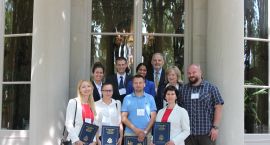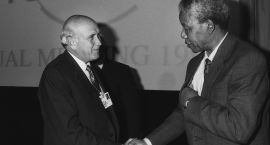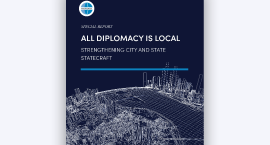We’ve been discussing global leadership a lot recently. Between the U.S. Global Leadership Project, the Global Leadership Summit, and the Global Leadership Institute, you may be wondering what this new buzz word is all about.
What is “global leadership” in a nutshell?
In a few words: understanding context.
This could be true for many fields, but is particularly true for leaders working in international business environments.
The fact is we’ve been in the leadership business for quite a while. We’ve been administering the U.S. Department of State’s International Visitor Leadership Program projects for over 40 years and have hosted international delegations for even longer.
We’re taking a page from our experience in diplomacy and applying it to the private sector. Global leadership is how we think corporations should do business around the world, particularly managers from multi-national corporations entering foreign business environments.
Wait. Isn’t “global leadership” just “leadership,” but international?
Not exactly. Global leadership is a way that we think leaders should operate in the globalized world. There are plenty of international leaders that don’t necessarily exemplify global leadership.
When we’re talking about global leadership, we mean business. Literally. Global leadership is about knowing the context of where your business operates and using that to make meaningful relationships with that community.
How is it different from cross-cultural communications?
It’s more than just culture. Bram Lowsky of Americas at Right Management said that language and cultural training is not enough for the modern business person to succeed. Global leadership is cross-cultural understanding, community engagement, effective strategic communications, social responsibility, and an emphasis on understanding context wherever you go.
Who does a good “global leader” look like?
Good global leaders understand the context of their business environment. They are individuals that take the time to understand their environments and build among the community before making business decisions.
They are chameleons.
Being a chameleon is the first part. The second part is vigilance: constant awareness, analysis and assessment of risks.
A recent survey found that two in five managers fail to incorporate these two characteristics into their international assignments. In fact, 22 percent of North American employers give virtually no training to employees departing on international assignments, said Lowsky.
So how does the Meridian Global Leadership Institute (GLI) fit into all of this?
First of all, GLI is not here to make leaders. We’re taking existing leaders and making them more effective internationally. We’re doing this through a consultative approach in order to customize programs, increasing that percentage of employees receiving training for international assignments.
This is not International Business 101. Our tailored consulting will offer specific insight into your international location. GLI also offers real tools that business leaders can use immediately, to help navigate challenging cultural, political and economic situations abroad.
How can I learn more?
We’re glad you asked. We will continue to write about this subject right here on The LEAD. If you would like more information about GLI’s programs, please contact Michael Ross at 202-939-5544 or mross@meridian.org.
















